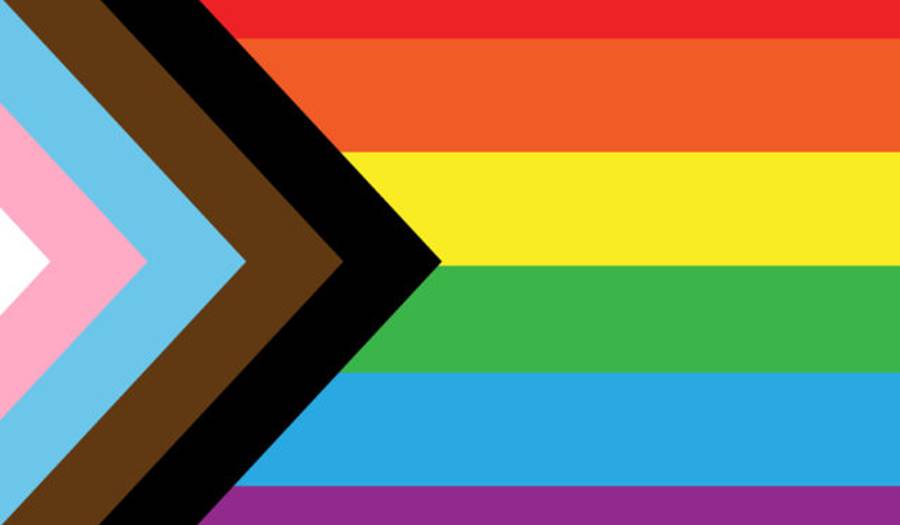
LGBTGAI+ Positive Parenting
10/8/2021

October 11th is National Coming Out day. In honor, we are going to discuss LGBTQIA+ terminology as well as learn how to raise LBGTQIA+ allies, how to support an LGBTQAI+ child, as well as identify local and national resources. Over 2% of teens aged 13-17 identify as gay, lesbian, or bisexual, 3% identify as transgendered, and 3% are unsure of their identity and/or orientation.
TERMINOLOGY
The first step in being able to talk to our children is to make sure we understand the terminology that is important to the LGBTQAI+ community.
GENDER, SEX, AND SEXUAL ORIENTATION
Gender and sexuality are two different terms that often get combined but should be kept and thought about separately.
Gender
Gender is a social and cultural construction of behaviors, norms, and roles associated with being a woman or a man. Gender norms vary depending on your ethnicity, culture, and society. Gender norms can change over time. For example, in the 1800 and 1900s, pink was considered a masculine color and boys often wore dresses. This has changed and now wearing a dress and pink are considered feminine norms.
Sex
Sex is the biological expression of chromosomes, genes, hormones, and anatomy. Sex is often identified based on reproductive organs. Sex is not binary. It is biologically expressed on a spectrum.
The two most common expressions of sex are male and female. In addition to those expressions is a spectrum of biological expression including intersex. This biological expression of sex means a person is born with differences in chromosomes, genitals, and reproductive anatomy that are neither 100% male nor 100% female. Often at birth, the parents assign their child as male or female.
Gender Identity
Gender identity is the internal sense of who one is. A person may identify as male, female, neither, or a combination. Gender identity develops over time and is the interplay of biology, development, socialization, and culture. Gender identity starts forming between the age of 2 and 4 years.
Gender identification terms describe if a persons assigned sex and gender identity match. Cisgender is used to describe people whose gender identity matches their assigned sex. Transgender is used to describe people whose gender identity does not match their assigned sex. Nonbinary describes a person who identifies as neither a man nor woman.
An intersex person can be cis or transgender. They will be cisgender if they identify with the gender they were assigned, or transgender if they do not identify with the gender they were assigned. Intersex is not a gender identity; it is a biological expression.
Sexual orientation
Sexual orientation is the way a person expresses themselves sexually including feelings, thoughts, attractions, and behaviors. Sexuality may be set for one person or may be fluid and changing for another person. It cannot be predicted and cannot be changed by external forces (such as conversion therapies).
There are different types of sexuality.
Heterosexuality, often called being straight, is when a person is attracted to someone of the opposite gender or sex. This means a person who identifies as a man will be attracted to a person who identifies as female. A trans person is heterosexual when they are exclusively attracted to a person of the opposite gender that they identify as.
The term queer is an umbrella term. It is used to describe someone who isn’t straight. It acknowledges that sexuality is a spectrum. This once considered derogatory term can mean many things and the meaning is individual to the person. A queer person may identify as queer or may also identify as sexually fluid (meaning it changes over time) or identify as gay, lesbian, bisexual, pansexual, skoliosexual, or asexual
Monosexuality, or being gay or lesbian, is when a person is attracted to someone of the same gender or sex. This means a person who identifies as male is attracted to another person who identifies as male. A trans person can be considered gay or lesbian when attracted to a person who shares their gender identity.
A person who is bisexual is attracted to people of multiple genders (but maybe not all). This is often used interchangeably with pansexual which is when you are attracted to people of all genders. It’s a slight but subtle difference.
A person who identifies as skoliosexual is attracted to people with non-cisgender gender identities such as people who are trans, nonbinary, or genderqueer.
People also may identify as asexual. This means they experience little or no sexual attraction.
Romantic orientation
Romantic orientation describes which people you are romantically attracted to. You can be heteroromantic meaning you have romantic relationships with people of the opposite gender or monoromantic meaning you have relationships with people of the same gender. You can be biromantic meaning you are romantically attracted to people or multiple genders or panromantic when you are romantically attracted to people of all genders. A person can also be aromantic meaning they do not experience romantic attraction.
Romantic attraction can be fluid and change over time. Some people identify as romantically fluid.
Labels
As we have seen above there are three different identifying labels: gender, sexual orientation, and romantic orientation. Each is treated separately. This can be confusing. Here are a few examples that may help clarify.
For example, you can identify as a cisgender, gay man who is monoromantic. This means you were assigned male at birth, identify as male, and have sexual and romantic relationships with men.
You could identify as a trans woman who is straight and aromantic This means you were assigned male at birth, identify as a woman, are sexually attracted to men, but don’t have romantic relationships with anyone.
You could identify as a cisgender female who is bisexual but monoromantic. This means you were assigned female at birth, identify as female, are sexually attractive to multiple genders, but only have romantic relationships with women.
It can be confusing but if you learn the terminology and think of these categories as distinct entities, it will make more sense.
Why do correct labels matter? Labels can be a meaningful way for some people to connect with others who are similar either in gender or attraction. If a person has shared their labels with you, please correctly use a person’s identified labels. We are all human and make mistakes but using incorrect labels, or misgendering, can be very hurtful. It can also be dangerous as you may be outing someone by mistake. If you purposefully misgender someone, take the time to consider your actions and learn more about the LGTBQAI+ community. If you accidentally misgender someone, apologize, correct yourself and move on. Spending too much time apologizing makes the wronged person need to comfort you and tell you “it’s ok”. This makes an uncomfortable situation even more uncomfortable. We can all improve by listening, being accountable, and committing to do better.
CORRECT TERMINOLOGY
In addition to labels, there are correct and incorrect ways to discuss gender and sexual identity. For example:
- Do not say she was born a girl or biologically female: say assigned female at birth
- Do not say when she was a girl; say when she presented as female or was perceived as female
- Do not say changed genders, became a girl, or turned into; use the term transitioned
- Transition is the correct term because it is not about changing genders, it is about shifting to match an existing gender identity.
- Do not say male to female or female to male, use trans woman or transman<,li>
- Do not use the term gender identity disorder, use the term gender dysphoria
- Do not use the term preferred pronouns, the term personal pronouns
- Do not call it sex reassignment surgery, it is called gender confirming surgery
- Do not use derogatory terms related to a person’s gender, sexual orientation or romantic orientation.

PARENTING
PARENTING TO RAISE LGBTQAI+ ALLIES
You cannot predict your child’s gender identity, sexual orientation, or romantic orientation, but you can make sure they are raised to know that people come in all different identities and orientations. In learning about different people and families, they will learn to celebrate diversity in all forms. They will also learn that no matter their identity or orientation that they will be loved.
It is never too early to teach kids about gender identity and sexual or romantic orientation. If your child is older and you are starting conversations, find out what they know. Use what they already know to drive conversation. They may have questions. If you do not know the answer, it is ok. There is so much information surrounding gender identity and sexuality that we don’t expect anyone to be an expert. If you don't know an answer, be willing to find the answer. You can even work on finding the answer together. Be supportive of their questions. June is Pride Month which is a great time to start discussing LGBTQAI+ communities but it shouldn’t be relegated to one month a year, it should be an ongoing conversation.
You can expose your children to diverse families in their life either in person, in tv shows or movies, in advertisements, and in children’s books. Here are some great books to consider adding to your library.









PARENTING AN LGBTQAI+ CHILD
Coming Out
Coming out is when a person self-discloses their gender identity and/or sexual orientation to their parents, friends, or community. It may be a short or long process. It may be easy or difficult. Often people come out during adolescence, but many acknowledge knowing earlier than this time that they had a different gender identity or sexual orientation than assumed.
Coming out can be an overwhelming process. There is fear of exposure before they are ready to be public with their identity or orientation. They may feel alone. They may be afraid of disappointing or angering family. They may be scared to be physically hurt by parents or people in the community. They may also be afraid of being thrown out of the house. Because this process is so overwhelming, it increases the risk of depression, anxiety, and mental health issues. LGBTQAI+ youth are eight times more likely to attempt suicide, six times more likely to have high levels of depression, and three times more likely to abuse substances such as alcohol and illicit drugs.
Parental Reaction to Coming Out
Parenting will never change your child’s gender identity or orientation, but the way you parent and discuss diversity will change the way your child feels about themselves, particularly if they identify as LGBTQAI+. You have the power to change their experience.
What should you do if your child “comes out” to you? This single most important thing that you can do is show love and acceptance. This doesn’t mean you will not need time to come to terms with this new information. It means you let your child know they are loved no matter who they are and who they love.
Learning your child identifies or has an orientation that is not the cultural norm can be a scary time for them and for you. Raising an LGBTQAI+ child can come with extra worries in relation to their safety and mental health. Over 1.8 million LGBTQAI+ youth consider suicide very year. A child who is accepted by one adult in their life is 40% less likely to attempt suicide. Let that person be you.
Accepting your child reduces but doesn’t eliminate the risk of depression or suicide. You must monitor your child for mental health danger or warning signs. If you are concerned with your child, the Trevor Project recommends “CARE”. Connect, Ask, Respond, and Empower. Connect by reaching out and checking on your child. Ask if they are thinking of suicide. Respond with empathy and compassion, then empower them with information and support. If your child needs someone to talk to immediately, they can contact the following resources:
Trevor Project Hot Line: (866) 388-7386 or text START to 678-678; operates 24 hours per day
Fenway Health Peer Listening Line: 800-399-PEER (7337) Monday-Saturday 5-10pm
Transgender Lifeline: (877) 565-8860, operates 24 hours a day
LGBT National Youth Talk Line: (800) 246-7743: M-F 4pm-12pm; Saturday 12-5pm
Other ways you can show your acceptance and support include
- Allowing and supporting self-expression
- Use correct pronouns and/or label
- A transgender or nonbinary child is 50% less likely to attempt suicide if the people they most respect in life use their correct pronouns
- Standing up for your child if mistreated
- Not tolerating slurs or jokes that involve gender identity or sexual orientation
- Connect your child with resources and events
- Speaking up at schools about acceptance and inclusive sex education
- Be willing to read and learn about LGBTQIA+ history and issues
Parenting a Transgender Child
If your child, identifies with a gender they were not assigned at birth, there are four affirmations that may be part of the process: social, legal, medical, and surgical. The timing of these affirmations or transitions is very personal. A person must consider the risks, benefits, any family factors, and any child-specific factors. This decision is best made by involving a team. This team should include your child, your family, their primary care provider, a mental health provider who specializes in transgender or gender diverse youth, social supports, and a pediatric endocrinologist or gender specialist.
Social affirmations are changes that include expressing their gender through clothing choices, hair styles, pronouns, and name. Some people will confirm their gender at home or with close friends but not in a larger community. Some people will socially affirm their gender everywhere. There is no right or wrong way to socially affirm gender.
Legal affirmations are changes that include changing name and gender on legal documents including birth certificates, passports, health insurance cards, and medical records.
Medical affirmations include using hormones to develop characteristics of their identified gender. Using hormones create changes some of which hare reversible, some of which are not. Often for younger children, hormone “blockers” are used. This causes a REVERSIBLE delay in physical development. It gives a child more time to consider options without feeling rushed. It has been shown to great improve psychological functioning and reduce the risk of depression in transgender teens. Medical affirmation may also include using hormone blockers or contraceptive agents to reduce or block menstruation. Trans men can find menstruation to be distressing and a reminder of their incorrect gender identity.
Surgical affirmation is the modification of certain characteristics including hair distribution, breasts, genitalia, and facial features. This is not reversible. It is often not done until older adolescence or adulthood. Surgical affirmation is personal choice and not all transgender people choose to pursue any or all available surgical affirmations.
Resources (links to books HERE)
BOOKS FOR YOUR OLDER CHILDREN/TEENS












BOOKS FOR PARENTS
(links here)









ONLINE RESOURCES
(click on logo for link)
LOCAL SOCIAL RESOURCES
The North Shore Alliance of GLBTQ+ Youth provides meetings, youth groups, parent and educator communication groups, health consultations, clubs, yoga, and tutoring. They host social get togethers including dances. They have the Sexuality and Gender Acceptance Group as well as NAGLY North in Newburyport. They have the N-TALE training and leadership program. Their Salem, MA location has drop-in hours.
Seacoast Outright provides group meetings, game nights, online chat spaces, and parent groups in the Portsmouth, NH/seacoast region.
McVAGLY (their info can be found on Facebook and Twitter) has groups for LGBTQ+ youth in the Merrimack Valley.
Based in Newburyport, Merrimack River Wellness offers LGBTQ+ inclusive and supportive counseling, support groups, and parent groups.
LOCAL MEDICAL RESOURCES
Fenway Health, also known as the Sidney Borum clinic, provides health care and supportive services including transgender health and behavioral health. They also have a Junior Health Center for adolescents.
At Children’s Health Care, we do not discriminate based on gender identity or sexual orientation. We welcome and accept everyone. We hope you feel you are able to be open with your provider with your identity, orientation, or any questions you may have. If you or your child has questions or needs additional resources, please do not hesitate to reach out and ask your provider.
Children’s Health Care of Newburyport, Massachusetts and Haverhill, Massachusetts is a pediatric healthcare practice providing care for families across the North Shore, Merrimack Valley, southern New Hampshire, and the Seacoast regions. The Children’s Health Care team includes pediatricians and pediatric nurse practitioners who provide comprehensive pediatric health care for children, including newborns, toddlers, school aged children, adolescents, and young adults. Our child-centered and family-focused approach covers preventative and urgent care, immunizations, and specialist referrals. Our services include an on-site pediatric nutritionist, special needs care coordinator, and social workers. We also have walk-in appointments available at all of our locations for acute sick visits. Please visit chcmass.com where you will find information about our pediatric doctors, nurse practitioners, as well as our hours and services.
Disclaimer: this health information is for educational purposes only. You, the reader, assume full responsibility for how you choose to use it.

















